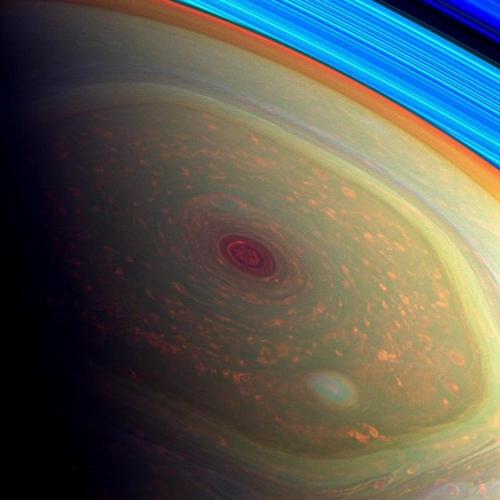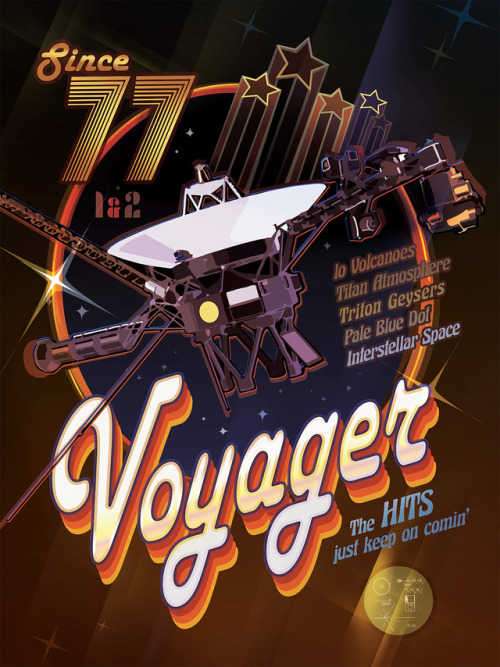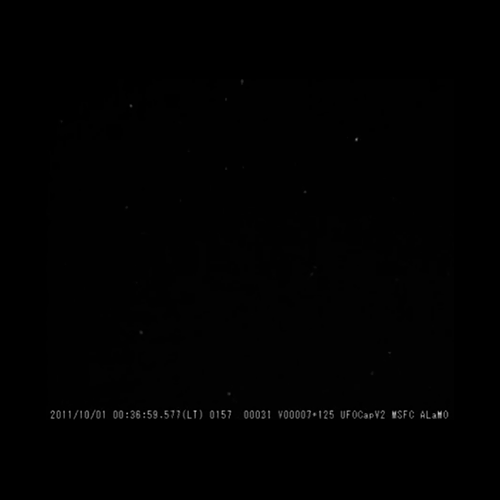I Wish This Was The Universe Where Pluto Was Still A Planet...
I wish this was the universe where Pluto was still a planet...




The possibilities are truly endless.
More Posts from Soshowmethesea and Others
It's crazy how similar these are!

Nebula Images: http://nebulaimages.com/ Astronomy articles: http://astronomyisawesome.com/

Saturns Swirling Cloudscape
js


Thanks to the twin Voyager spacecraft, music is truly universal: Each carries a Golden Record with sights, sounds and songs from Earth as it sails on through the Milky Way. Recalling the classic rock era of the late 1970s when the Voyagers launched, this poster is an homage to the mission’s greatest hits. Some of the most extraordinary discoveries of the probes’ first 40 years include the volcanoes on Jupiter’s moon Io, the hazy nitrogen atmosphere of Saturn’s moon Titan and the cold geysers on Neptune’s moon Triton. Voyager 1 is also the first spacecraft to deliver a portrait of our planets from beyond Neptune, depicting Earth as a ‘pale blue dot,’ as of Aug. 25, 2012, to enter interstellar space. Voyager 2 is expected to enter interstellar space in the coming years. Even after 40 years, the Voyagers’ hits just keep on coming.
Enjoy this and other Voyager anniversary posters. Download them for free here: https://voyager.jpl.nasa.gov/downloads/
Credit: NASA/JPL-Caltech
Make sure to follow us on Tumblr for your regular dose of space: http://nasa.tumblr.com.
Reminds me of the theory where people say the Moon is fake. Absolutely ridiculous.

In case you missed it earlier in July, here’s a look at how our view of Pluto has changed over the course of several decades. The first frame is a digital zoom-in on Pluto as it appeared upon its discovery by Clyde Tombaugh in 1930 (image courtesy Lowell Observatory Archives). The other images show various views of Pluto as seen by NASA’s Hubble Space Telescope beginning in the 1990s and NASA’s New Horizons spacecraft in 2015. The final sequence zooms in to a close-up frame of Pluto released on July 15, 2015.
This amazing view of details on Pluto came via New Horizons, which launched on Jan. 19, 2006. New Horizons swung past Jupiter for a gravity boost and scientific studies in February 2007, and conducted a reconnaissance flyby study of Pluto and its moons in summer 2015. Pluto closest approach occurred on July 14, 2015. As part of an extended mission, the spacecraft is expected to head farther into the Kuiper Belt to examine one or two of the ancient, icy mini-worlds in that vast region, at least a billion miles beyond Neptune’s orbit.
Image credits available here.

Incredible display of depth through Earths atmosphere in this shot from Reid Wiseman aboard the ISS
js

reblog and make a wish! this was removed from tumbrl due to “violating one or more of Tumblr’s Community Guidelines”, but since my wish came true the first time, I’m putting it back. :)
Poor Pluto! It'll always be a planet to me.
Between the time Pluto was discovered and when it was declassified as a planet, it did not make even one full rotation around the sun.

The Infrared Visible Andromeda: This remarkable synthetic color composite image was assembled from archives of visible light and infrared astronomy image data. The field of view spans the Andromeda Galaxy are also included in the frame. via NASA
js
-
 lucian-evander liked this · 2 years ago
lucian-evander liked this · 2 years ago -
 guynamedultimax liked this · 4 years ago
guynamedultimax liked this · 4 years ago -
 uberboobera liked this · 4 years ago
uberboobera liked this · 4 years ago -
 tinywhisperskid-blog liked this · 4 years ago
tinywhisperskid-blog liked this · 4 years ago -
 strawveryy liked this · 4 years ago
strawveryy liked this · 4 years ago -
 daisiesamongstars liked this · 4 years ago
daisiesamongstars liked this · 4 years ago -
 thecartonizer liked this · 4 years ago
thecartonizer liked this · 4 years ago -
 lqboy liked this · 4 years ago
lqboy liked this · 4 years ago -
 astrangemoon liked this · 4 years ago
astrangemoon liked this · 4 years ago -
 giirlinterrupted liked this · 4 years ago
giirlinterrupted liked this · 4 years ago -
 you-got-the-triforce liked this · 4 years ago
you-got-the-triforce liked this · 4 years ago -
 sippypretty liked this · 4 years ago
sippypretty liked this · 4 years ago -
 srodulvroux liked this · 5 years ago
srodulvroux liked this · 5 years ago -
 addix-hot-girls-tattoo liked this · 5 years ago
addix-hot-girls-tattoo liked this · 5 years ago -
 addix-hot-girls-tattoo reblogged this · 5 years ago
addix-hot-girls-tattoo reblogged this · 5 years ago -
 cerezzzita liked this · 5 years ago
cerezzzita liked this · 5 years ago -
 im-queer-and-tired liked this · 5 years ago
im-queer-and-tired liked this · 5 years ago -
 runawayblaster liked this · 5 years ago
runawayblaster liked this · 5 years ago -
 quineveere liked this · 5 years ago
quineveere liked this · 5 years ago -
 the-casual-cat reblogged this · 5 years ago
the-casual-cat reblogged this · 5 years ago -
 thatonefan02 reblogged this · 5 years ago
thatonefan02 reblogged this · 5 years ago -
 thatonefan02 liked this · 5 years ago
thatonefan02 liked this · 5 years ago -
 holographicskunk liked this · 5 years ago
holographicskunk liked this · 5 years ago -
 rin-the-shadow liked this · 5 years ago
rin-the-shadow liked this · 5 years ago -
 dietcokeicee731 liked this · 5 years ago
dietcokeicee731 liked this · 5 years ago -
 almanostra liked this · 5 years ago
almanostra liked this · 5 years ago -
 solaeirr liked this · 5 years ago
solaeirr liked this · 5 years ago -
 class42warship liked this · 5 years ago
class42warship liked this · 5 years ago -
 bloodieash reblogged this · 5 years ago
bloodieash reblogged this · 5 years ago -
 bloodieash liked this · 5 years ago
bloodieash liked this · 5 years ago -
 spindlewig liked this · 5 years ago
spindlewig liked this · 5 years ago -
 a-happy-crusteacean reblogged this · 5 years ago
a-happy-crusteacean reblogged this · 5 years ago -
 a-happy-crusteacean liked this · 5 years ago
a-happy-crusteacean liked this · 5 years ago -
 cheertakeover liked this · 5 years ago
cheertakeover liked this · 5 years ago -
 coolgs liked this · 5 years ago
coolgs liked this · 5 years ago -
 evilazfuck-blog liked this · 5 years ago
evilazfuck-blog liked this · 5 years ago -
 svennytheshipper liked this · 5 years ago
svennytheshipper liked this · 5 years ago -
 zadkiel-poems-blog liked this · 5 years ago
zadkiel-poems-blog liked this · 5 years ago -
 fanrifficnumber1superguy reblogged this · 6 years ago
fanrifficnumber1superguy reblogged this · 6 years ago -
 fanrifficnumber1superguy liked this · 6 years ago
fanrifficnumber1superguy liked this · 6 years ago -
 bangtannabie liked this · 6 years ago
bangtannabie liked this · 6 years ago -
 big-massive-cunt liked this · 6 years ago
big-massive-cunt liked this · 6 years ago -
 werewolfie liked this · 6 years ago
werewolfie liked this · 6 years ago -
 waltzintheforest reblogged this · 6 years ago
waltzintheforest reblogged this · 6 years ago
"You're so down to Earth, and I'm up in the stars, so show me the sea, and I'll take you to Mars."
36 posts